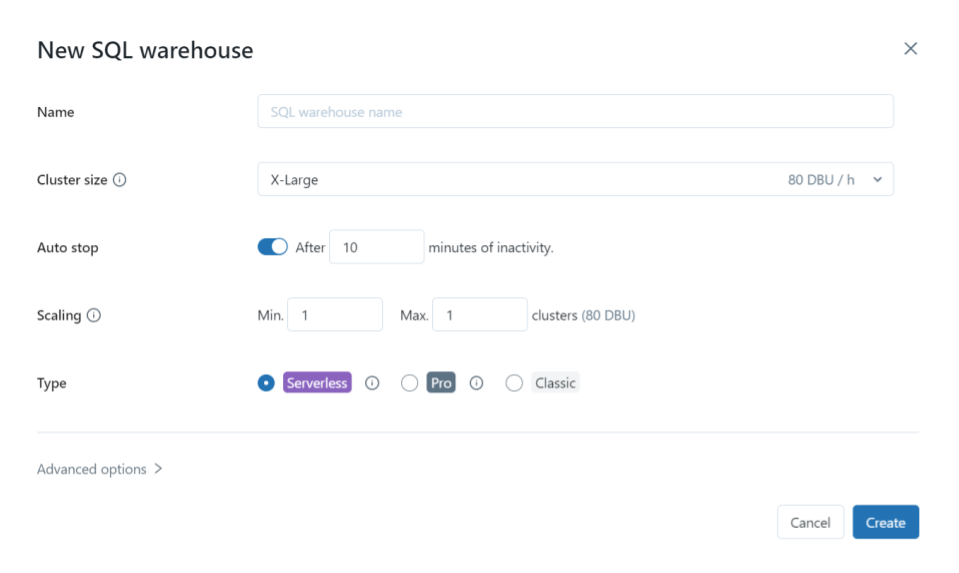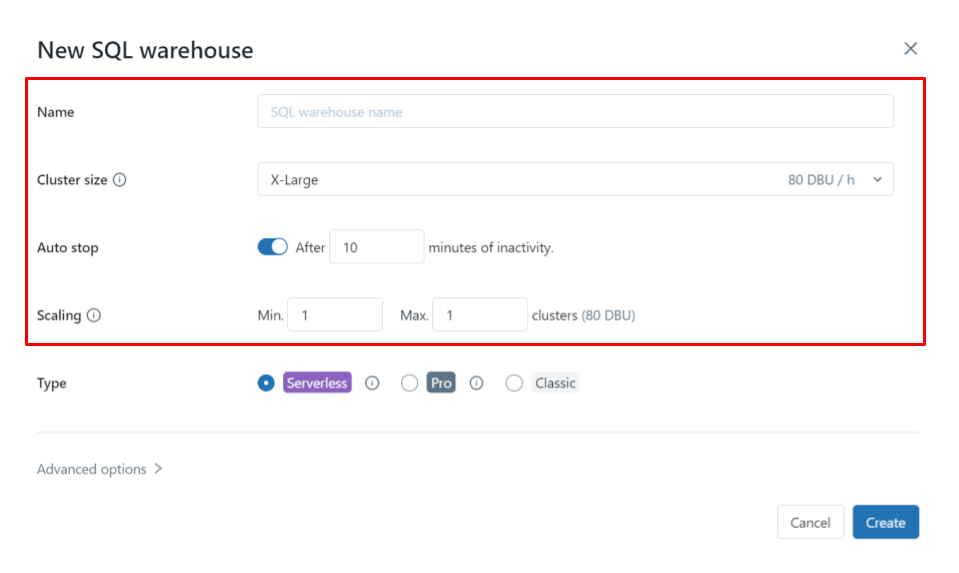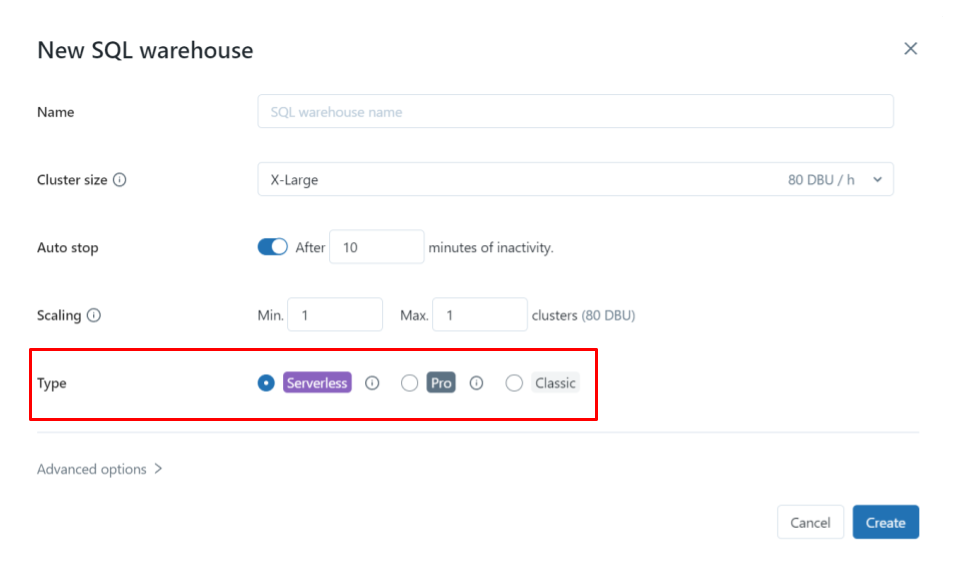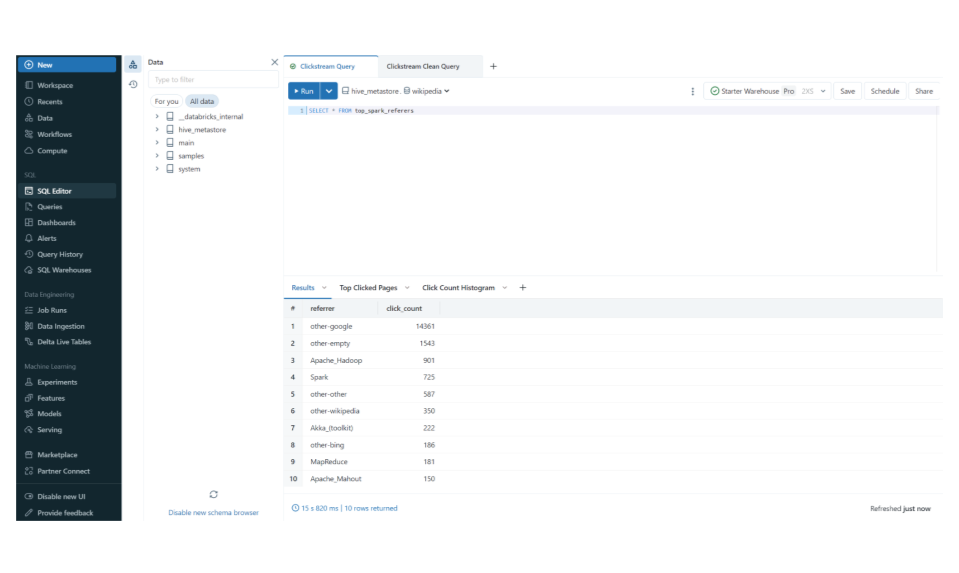Getting started with Databricks SQL
Databricks Concepts

Kevin Barlow
Data Practitioner
SQL Compute vs. General Compute
Designing compute clusters for data science or data engineering workloads...
import pyspark.sql.functions as F
spark_df = (spark
.read
.table('user_table'))
spark_df = (spark_df
.withColumn('score',
F.flatten(...))
)
is inherently different than designing compute for SQL workloads
SELECT *
FROM user_table u
LEFT JOIN product_use p
ON u.userId = p.userId
WHERE country = 'USA'
AND utilization >= 0.6
SQL Warehouse

SQL Warehouse
SQL Warehouse Configuration Options
- Cluster Name
- Cluster Size (S, M, L, etc.)
- Scaling behavior

SQL Warehouse
SQL Warehouse Configuration Options
- Cluster Name
- Cluster Size (S, M, L, etc.)
- Scaling behavior
- Cluster Type

SQL Warehouse Types
Different types provide different benefits
Classic
- Most basic SQL compute
- In customer cloud
Pro
- More advanced features than Classic
- In customer cloud
Serverless
- Cutting edge features
- In Databricks cloud
- Most cost performant
SQL Editor

Common SQL Commands
COPY INTO
- Grab raw data and put into Delta
- The Extract of ETL
COPY INTO my_table
FROM '/path/to/files'
FILEFORMAT = <format>
FORMAT_OPTIONS ('mergeSchema' = 'true')
COPY_OPTIONS ('mergeSchema' = 'true');
CREATE <entity> AS
- Create a Table or View
- The Transform in ETL
CREATE TABLE events
USING DELTA
AS (
SELECT *
FROM raw_events
WHERE ...
)
Let's practice!
Databricks Concepts

